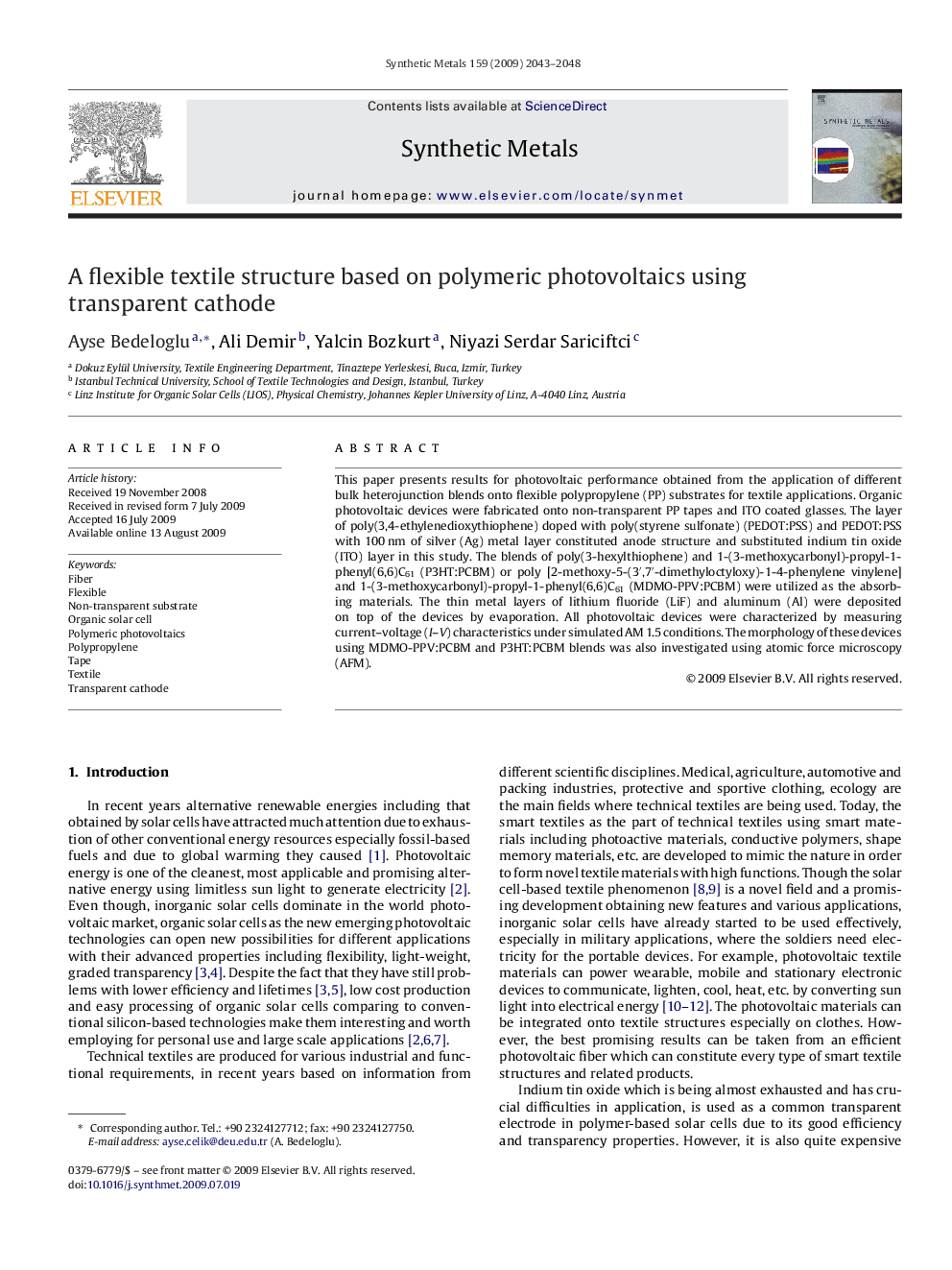| Article ID | Journal | Published Year | Pages | File Type |
|---|---|---|---|---|
| 1442446 | Synthetic Metals | 2009 | 6 Pages |
This paper presents results for photovoltaic performance obtained from the application of different bulk heterojunction blends onto flexible polypropylene (PP) substrates for textile applications. Organic photovoltaic devices were fabricated onto non-transparent PP tapes and ITO coated glasses. The layer of poly(3,4-ethylenedioxythiophene) doped with poly(styrene sulfonate) (PEDOT:PSS) and PEDOT:PSS with 100 nm of silver (Ag) metal layer constituted anode structure and substituted indium tin oxide (ITO) layer in this study. The blends of poly(3-hexylthiophene) and 1-(3-methoxycarbonyl)-propyl-1-phenyl(6,6)C61 (P3HT:PCBM) or poly [2-methoxy-5-(3′,7′-dimethyloctyloxy)-1-4-phenylene vinylene] and 1-(3-methoxycarbonyl)-propyl-1-phenyl(6,6)C61 (MDMO-PPV:PCBM) were utilized as the absorbing materials. The thin metal layers of lithium fluoride (LiF) and aluminum (Al) were deposited on top of the devices by evaporation. All photovoltaic devices were characterized by measuring current–voltage (I–V) characteristics under simulated AM 1.5 conditions. The morphology of these devices using MDMO-PPV:PCBM and P3HT:PCBM blends was also investigated using atomic force microscopy (AFM).
